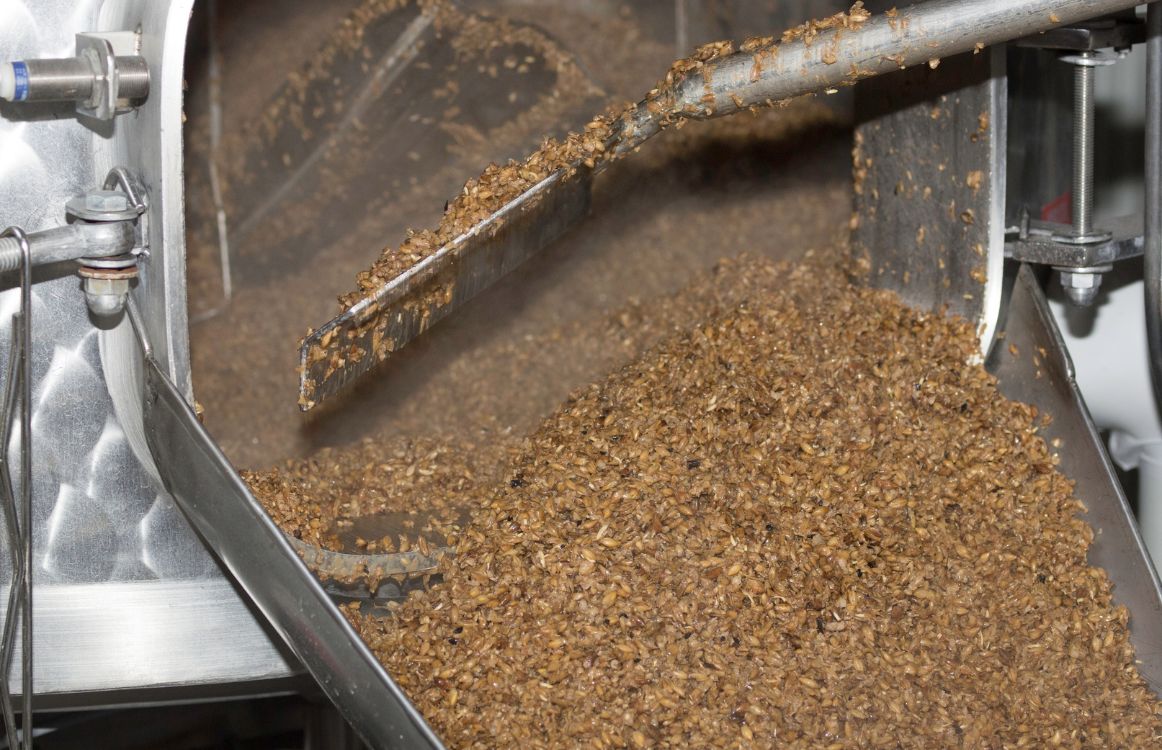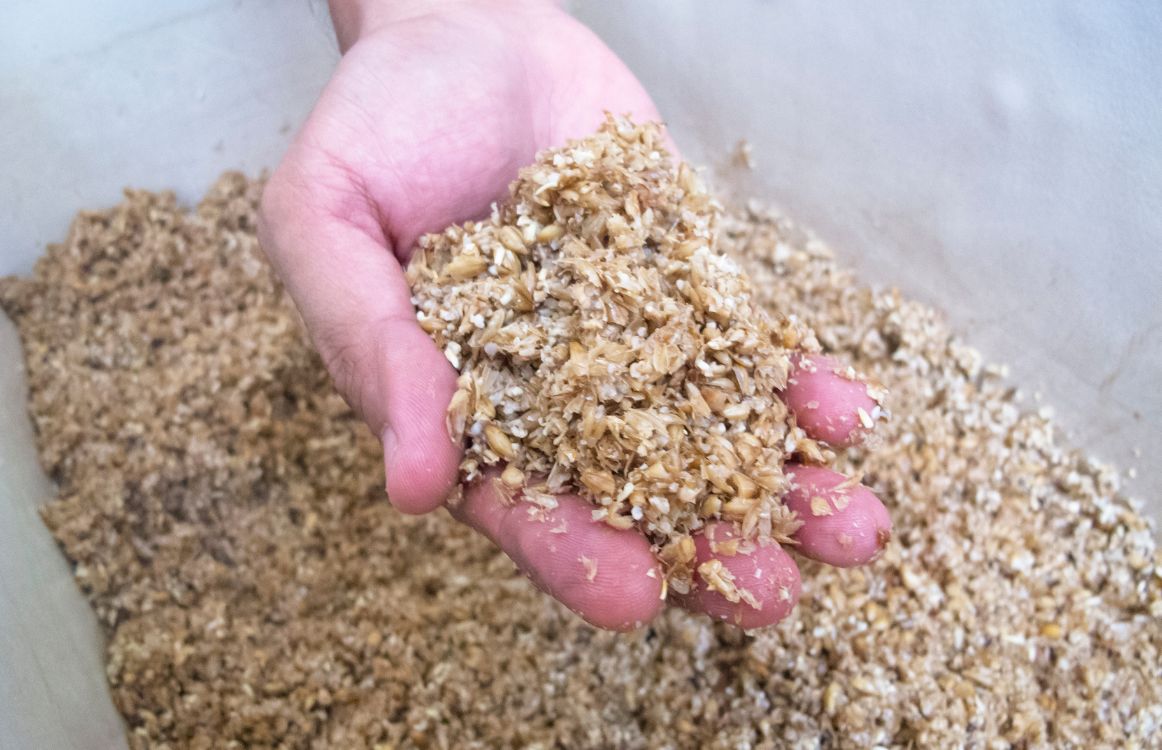The Nutritional Value of Brewery Waste
Many brewers are unaware of how valuable the leftovers of their brewing process is. The nutritional value of brewery waste is tremendous and it can be used for many industries, including to feed livestock.
To get started, it is helpful to understand first what brewery waste is, second the nutritional value, and finally, how you can ensure you use it effectively rather than simply tossing it and letting it go to, literal, waste.

What Is Brewery Waste?
As you surely already know, brewing is a masterfully crafted business that utilizes nutrient dense ingredients like grain, hops, and other adjuncts, and at the far end of this process is a delightful beer rich in vitamins, minerals, and other healthy byproducts like probiotics and amino acids.
But, while the beer is a wonderful product to enjoy and to sell for profit, the other side of that end product is the tremendous amount of waste.
After all, a great brew is made by using high quality grain – oats, wheat, barley, and even corn, rice, or millet – all of which are rich in healthy benefits to the human body. Also, top quality water and hops are also used to create what ends up being a flavorful fermented tea of sorts.
Tea?
Yes. Tea.
Think about it.
The grains are often grown specifically to be used in beer. They are then commonly roasted or kilned, or “malted,” to unlock the sugars in the grain and ground or cracked open to expose the sugars to boiling water.
In that boil, the grains are steeped and hops are added either during or after the boil, in order to introduce bitterness to what would otherwise be a sweet beverage.
The steeping process in brewing is called the mash-in, but let’s be honest, it is steeping, just like with tea.
Next comes the sparging process, during which the grain is strained out of the liquid and sprayed down with more water, which is then either included in the original brew or set aside to make a lighter, session beer of sorts.
And now what?
Now you have a wort that is ready for fermentation, pure liquid, and you have a ton of wet, soggy, steeped grain and hops. In fact, for every 100L of beer produced, we have approximately 20kg of brewery waste leftover.
And while you can argue that many of those nutrients from the grain and hops have been transferred to the wort, which is true, it must also be noted that tons of nutrients remain locked in those grains and hops – nutrients that should not go to waste.
This wet grain and hops conglomeration is referred to either as brewery waste or as brewers spent grain, BSG.
Just how many nutrients remain in BSG?
Nutrients in Brewery Waste
Research shows that, in general, while much of the starch is extracted from BSG during the brewing process, much of the protein and fiber remain.
Specifically, BSG is rich in glutamates and non-cellulosic polysaccharides, both of which are excellent for digestion. After brewing, BSG contains about 20% protein and 70% fiber, which is even more concentrated after the mash-in than it was before, making brewery waste ideal additives for both snack foods and animal feed.
Some essential amino acids still present in BSG include lysine, leucine, phenylalanine, and isoleucine, all of which are called essential because mammalian bodies cannot produce them. Thus, they must be sourced from foods as they help the body synthesize proteins, hormones, and other nutrients critical to health.
Non-essential amino acids in BSG include histidine, glutamic acid, aspartic acid, valine, arginine, and alanine, all of which our bodies can produce, but are still helpful to source from foods.
Because of the concentration of these nutrients in BSG, brewery waste is even more healthful for human and animal consumption than barley or other grains alone.
How Brewery Waste Can Be Used

Brewery waste has been used for animal feed for millennia, as it is seems highly intuitive for farmers to simply toss leftover food products that humans won’t eat to the pigs, cows, or chickens.
The one caveat some farmers have found is that BSG must be used fresh. After about 2 days from sparging, the BSG will begin to smell, which signals the production of beer spoilage, which is full of bacteria and other contaminants that make food taste bad and can indeed get humans and animals sick.
When BSG that has gone bad is fed to dairy cows, the milk will smell bad as well.
In any event, farmers have recommended feeding the BSG to dairy cows right after milking so as to allow the cows time to process the waste. When used in this way, the milk will not end up smelling bad.
If brewers can find a way to preserve BSG so that it does not go bad, it may have a longer shelf life and be usable for much longer.
Recently, food companies have realized how helpful it can be to human nutrition to include BSG in snack products and even in breads, muffins, and other bread products like pasta.
Indeed, bakers have found that when just 10% of their grain product is made up of BSG, the fiber content will double, making a high fiber product great for their consumers’ digestion.
Other interesting ways that BSG has been used in recent years have included dog treats and compost.
Of course, the same rules apply to dog treats as to human baked goods or livestock feed. You are increasing the nutritional value of the dog’s food.
In terms of compost, BSG can be used to enrich existing compost and even to grow wild mushrooms, which will then be enriched as well.
In the end, there are so many beneficial uses to BSG that, just because it no longer serves a purpose in beer does not mean that it cannot still be tremendously beneficial to humans and animals alike.
Cheers!
Are you still pitching fresh yeast every time? By reusing your yeast, you can save up to hundreds of thousands of dollars per year on just yeast alone!
Join the hundreds of brewers from all around the world using the Smartest Automated Yeast Cell Counter! Request a Free Demo Account today and experience firsthand how Oculyze can take your brewery to the next level!
Sources:
- https://jasbsci.biomedcentral.com/articles/10.1186/s40104-019-0382-1
- https://www.linkedin.com/pulse/what-you-need-know-brewers-waste-mashisha-biko-kithinji/
- https://pubmed.ncbi.nlm.nih.gov/28833108/
- https://spentgoods.ca/nutritional-benefits-of-spent-grains/
Stay on top on important fermentation insights – subscribe to our monthly newsletter and receive a hand-picked selection of our most relevant articles straight to your inbox.
Never miss a beat and get real time updates with a new article each workday by subscribing our social media channels.
Instagram | Facebook | Twitter | YouTube


